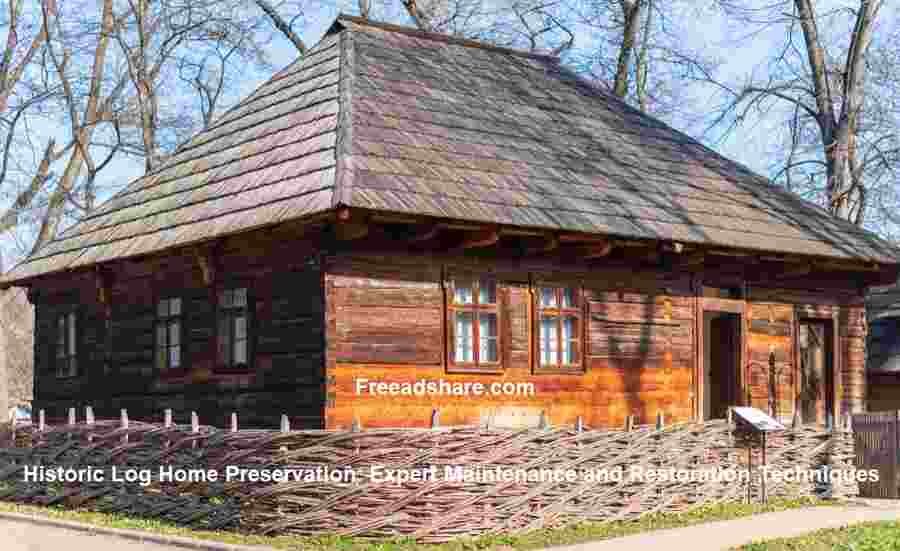
Why Preserving Log Homes Matters
Historic log homes are significant in local and national history, serving as family homes and retreats for generations. Their craftsmanship and natural beauty contribute to their preservation, preserving a tangible link to past generations’ skills, traditions, and stories. These buildings connect us to our roots and showcase early builders’ ingenuity and resourcefulness
In the modern era, there’s an increasing awareness of sustainability and heritage conservation, with more homeowners seeking ways to restore or maintain these pieces of living history. Companies specializing in log home restoration, like Log Masters Restorations, demonstrate that with proper care, log homes can last centuries and continue to provide comfort and character for today’s families. Preserving these homes supports community identity and honors a unique architectural style that sets them apart from more generic construction, making their conservation a passion for many.
Also Read: What is Chainiste
Regular Maintenance Checks for Log Homes
Consistent inspections are the cornerstone of successful log home care. Homeowners are advised to walk the perimeter of their property at least twice a year, ideally every spring and fall, to catch early signs of trouble before they escalate. Start by gently pressing logs in various locations—soft spots, hollow sounds, or visual discoloration can all indicate underlying rot or moisture issues.
Pay close attention to the chinking or caulking that seals the spaces between the logs. Over time, these materials can separate from the wood, develop cracks, or shrink, making it easy for rain, insects, and drafts to get inside. The roofline is another area that often hides minor leaks or deterioration. Inspect flashing, eaves, gutters, and downspouts, ensuring water is directed away from the house and not pooling near the foundation.
- Test for moisture problems by checking for soft or dark patches on logs
- Inspect chinking/caulking for cracks, gaps, or separation
- Ensure gutters are clean, tight, and efficiently guide water away
- Look for landscaping, mulch, or debris resting against the logs, which can trap moisture
Swift attention to even minor findings during these checks allows homeowners to enjoy their log homes for decades, often with minimal ongoing expense.
Best Practices for Weatherproofing
Weatherproofing is the most critical routine task for log home preservation. Their prominent wood surfaces make log structures susceptible to sun, wind, rain, and snow. To get ahead of the damage, it is recommended that all exterior surfaces be treated every three to five years with a weather-resistant, UV-blocking stain or finish explicitly designed for log homes. Trimming back bushes and tree branches around the house ensures the logs remain dry after storms and helps air circulate, speeding drying and reducing the decay opportunities.
Homeowners should also inspect overhangs, eaves, flashing, and door/window seals, ensuring each element deflects water from the structure. After stormy weather or heavy snowfall, a quick inspection for pooling water, ice dams, or wind-blown debris can prevent small leaks from turning into future headaches. The increasing popularity of log homes shows that many people have begun prioritizing these regular weatherproofing routines, protecting investment and tradition.
- Apply stain or sealant every 3–5 years, focusing on exposed southern and western walls.
- Keep shrubs and mulch two feet from the home’s base
- Inspect eaves, roofs, and flashing after significant weather events
These small investments in time and expenses go a long way toward guaranteeing comfort and reducing repair costs.
Dealing with Pest Infestations
Pest management is crucial in log home care since wood-boring insects and small mammals can silently undermine a structure’s stability. Termites, carpenter ants, beetles, and even woodpeckers may target exposed or untreated wood, creating tiny holes, soft spots, or mounds of sawdust near affected areas. Inspections should include the foundation, window sills, roof beams, and porch or deck timbers where infestations often start.
Preventing these visitors is far easier than attempting to oust an established colony. Basic strategies include keeping piles of firewood and organic debris well away from the house, sealing visible cracks or openings, and maintaining a dry perimeter around the structure. Early professional intervention with sustainable, low-toxicity treatments is best if an invasion occurs. These approaches protect the building, the immediate landscape, and local wildlife.
Restoration Methods That Work
Many restoration experts emphasize that preservation is preferable to replacement whenever possible in major work. Log splicing is a powerful technique: a section of a decayed or damaged log is removed, and a precisely matching piece of new wood is fitted into place. This method preserves as much historic material as possible while restoring structural soundness and aesthetic integrity.
Advances in chinking—the flexible filler between log joints—allow for effective sealing that expands and contracts with the home as temperatures fluctuate. Modern chinking compounds provide greater durability than historic mixtures but can be tinted or textured for authenticity. Before using stains or finishes on these repairs, it’s wise to sample a small area to ensure color blending with the original materials. These careful efforts make a crucial difference in protecting the home’s functionality and classic character.
Choosing Materials for Durability
When repairs are needed, durability starts with the right choices of wood, fasteners, and finishes. Matching the species and wood cut to the original structure is essential—differences can cause uneven expansion and eventually create gaps. Opt for galvanized or stainless steel hardware to guard against rust and corrosion.
Finishing materials should be vapor-permeable to allow the logs to “breathe” and release trapped moisture without allowing water in from the outside. Breathable stains and flexible, paintable chinking materials help maintain a consistent appearance and keep the building water-tight as the logs shift with the weather.
Community and Resources for Log Home Owners
Owning a log home is both an individual and communal experience. Seasoned owners and newcomers alike can benefit from the wisdom and experiences of others. Across the country, leagues, clubs, and online forums offer advice on maintenance tips, restoration stories, and even connections to skilled specialists. Workshops and seminars, sometimes held by preservation organizations or woodcraft guilds, provide practical instruction on topics like chinking technique or wood selection.
Joining these communities ensures you don’t have to reinvent the wheel. With the right support network, any challenge—from weatherproofing to pest management—becomes manageable, and the joys of owning a piece of history outweigh the challenges many times over. By sharing knowledge and collaborating on projects, log homeowners keep time-honored traditions alive and make practical stewardship easier for all.


